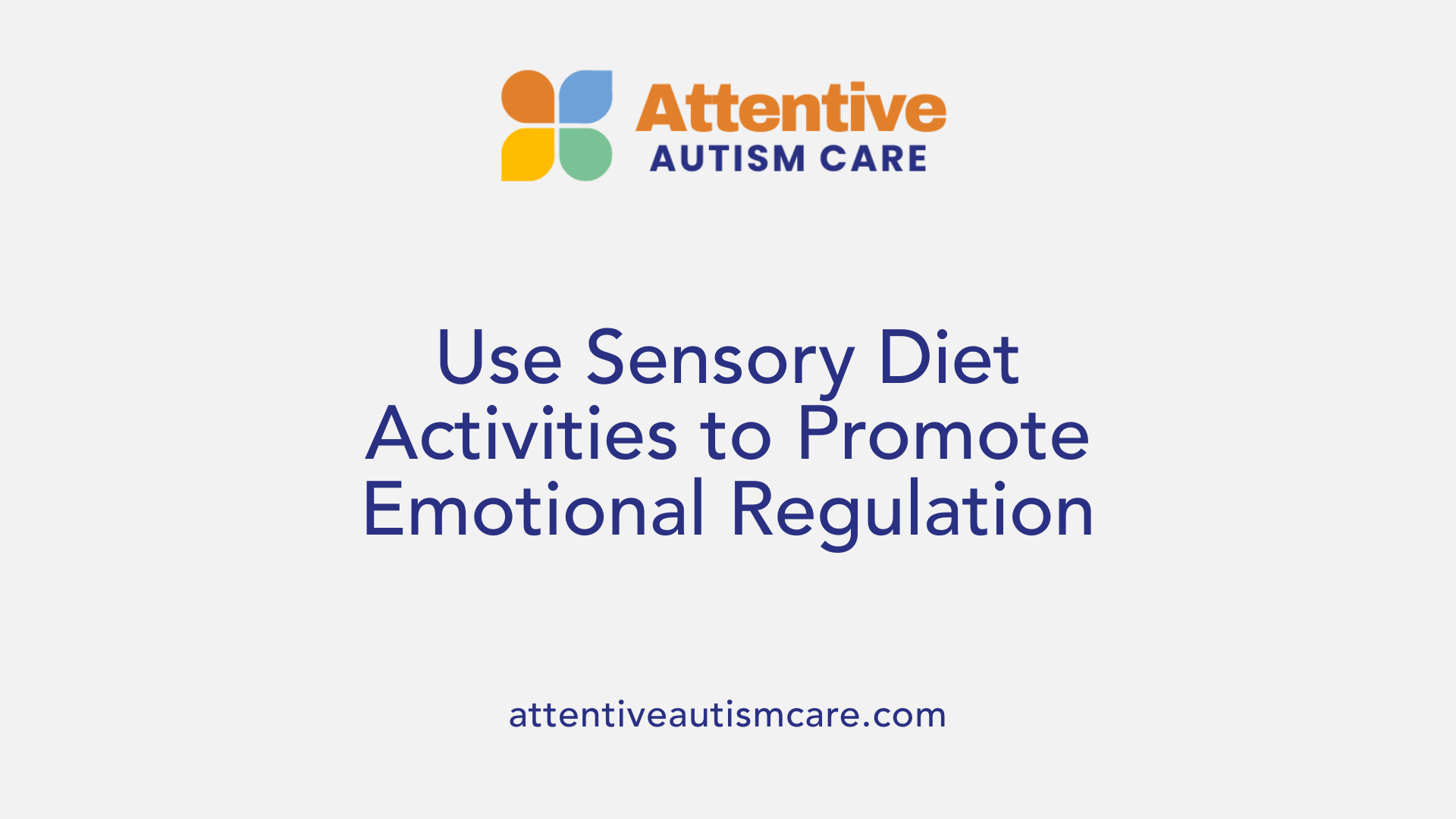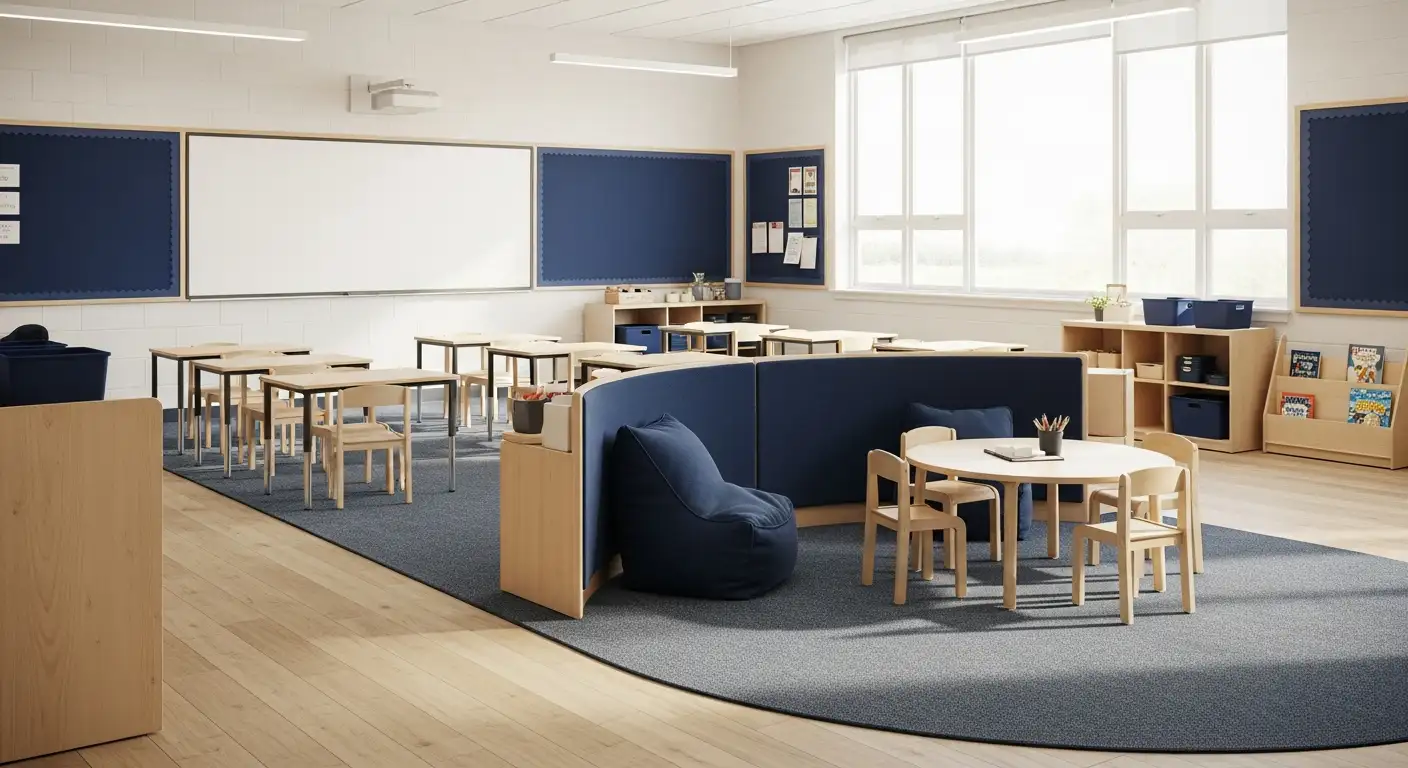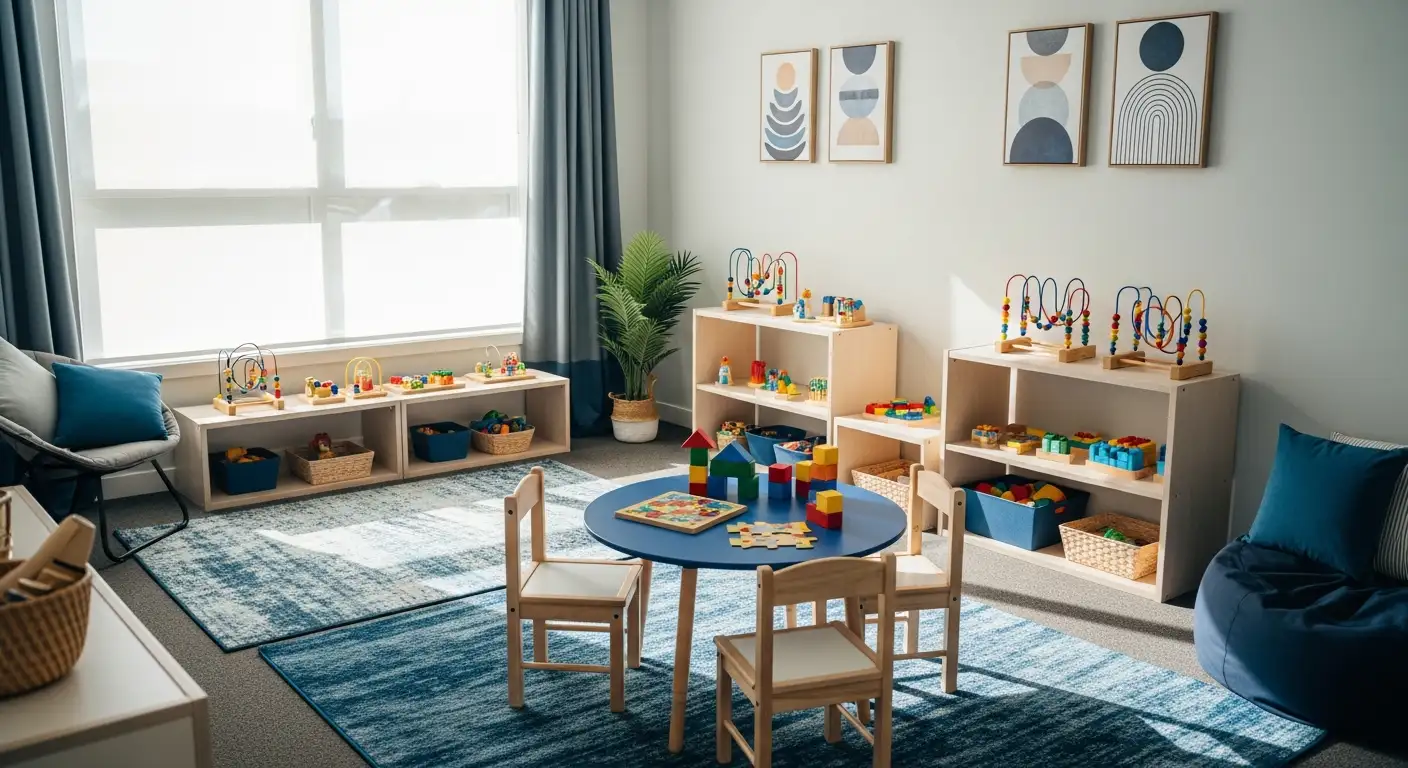How to Address Rigid Thinking Patterns in Autism
Tailored Strategies to Ease Rigidity in Autism Spectrum Disorder

Understanding Rigidity and Behavioral Patterns in Autism
Rigid thinking and behavior are common traits among individuals with autism, often leading to challenges in adapting to new situations or demands. Addressing these patterns effectively requires a nuanced understanding of the underlying causes, emotions, and sensory needs, along with personalized therapeutic approaches. This article outlines key insights and methods to support individuals with autism through flexible, compassionate strategies rooted in behavioral science.
Applied Behavior Analysis (ABA): Foundations and Applications in Autism Therapy
What is Applied Behavior Analysis (ABA) therapy and how is it used for autism?
Applied Behavior Analysis (ABA) therapy is an evidence-based approach focused on understanding and improving behaviors through learning principles. It is widely used in autism therapy to enhance social skills, communication, and daily living abilities while reducing challenging behaviors.
ABA begins with a thorough assessment of an individual's behaviors and needs. Professionals, such as Board Certified Behavior Analysts (BCBAs) and behavior technicians, develop personalized plans that employ techniques like positive reinforcement to encourage desirable behaviors. Structured teaching methods used in ABA include Discrete Trial Training (DTT), which breaks down skills into small steps, and Natural Environment Teaching (NET), which promotes learning in everyday settings.
Progress is carefully tracked through data collection and ongoing observation to adjust interventions as needed. The goal is to increase independence and improve quality of life by teaching practical skills tailored to each child's unique profile.
Research supports the effectiveness of ABA, especially when applied intensively over a long duration. Studies have shown notable gains in language development, cognitive function, and social interaction among children receiving ABA therapy. This demonstrates ABA's critical role in promoting developmental progress for individuals on the autism spectrum.
Recognizing and Addressing Rigid Thinking in Autism
What is the nature of rigid thinking in autism?
Rigid thinking in autism often manifests as a need for strict routines, difficulty adapting to change, and a preference for predictability. For children with Pathological Demand Avoidance (PDA), this rigidity is frequently fueled by overwhelming feelings related to everyday demands. Rather than simple stubbornness, their avoidance behaviors are deeply connected to anxiety and a need to maintain control over situations.
How does rigid thinking impact daily functioning and behavior?
Rigid thinking can make daily activities challenging, as changes or unexpected events may feel threatening. This leads children with PDA to employ avoidance strategies to manage their discomfort. These behaviors can sometimes appear defiant but are actually coping mechanisms to handle sensory overload, stress, or unpredictability in daily life.
What is the relationship between rigid thinking, anxiety, and control needs?
In children with PDA, rigid thinking is intertwined with heightened anxiety. The compulsion to control their environment is a way to reduce uncertainty and perceived demands, helping them feel safer and more secure. Their behaviors are often attempts to preempt or reduce anxiety rather than deliberate acts of opposition.
How can we differentiate rigidity from defiance?
Understanding that behaviors stem from anxiety and control needs is crucial. What may look like defiance is often an expression of feeling overwhelmed. Recognizing this distinction helps caregivers and professionals adopt compassionate and flexible strategies, focusing on support rather than punishment, thereby encouraging cooperation and emotional regulation.
The Role of Personalized and Flexible ABA Approaches in Managing Rigidity
Why is individualizing ABA programs essential for children with PDA?
Children with Pathological Demand Avoidance (PDA) often experience anxiety and a need for control that manifest as avoidance behaviors, not simple defiance. Because their emotional responses and behavior triggers vary greatly, ABA therapy must be tailored to their unique challenges. An individualized program respects each child's specific experiences and provides interventions that are responsive to their emotional state, increasing the likelihood of successful engagement.
How do flexible treatment plans benefit children with PDA and similar profiles?
Flexible ABA approaches allow therapy to dynamically adapt as the child's needs evolve. For example, indirect language and offering choices reduce perceived demands, lowering anxiety and encouraging cooperation. Tailored interventions can incorporate sensory diets, calming techniques, and environmental modifications that suit the child's current preferences and sensory sensitivities. This adaptability supports emotional regulation and reduces avoidance behaviors.
What does adapting interventions to a child's behavior and emotional state look like in practice?
Professionals use ongoing functional assessments and observe behavior in natural settings to understand triggers and patterns. Low-demand initial sessions build trust and create a safe therapeutic atmosphere. Interventions adjust to fluctuations in anxiety and mood, ensuring the child is neither overwhelmed nor under-challenged. Such responsiveness helps support positive behavior, effective communication, and gradual progress.
By prioritizing personalization and flexibility, ABA therapy can better meet the complex needs of children with PDA, promoting cooperation, reducing rigidity, and fostering meaningful development.
Involving Children in Decision-Making to Reduce Rigidity and Anxiety
Why Is Offering Choices Important for Children with PDA?
Offering choices empowers children with Pathological Demand Avoidance (PDA) by giving them control over their environment. This sense of control helps reduce anxiety and feelings of being overwhelmed, which are common challenges for these children. Providing options can change the interaction from a demand into a collaborative experience, making children more willing to participate.
How Does Using Indirect Language Help?
Using indirect language instead of direct commands softens the communication and lowers perceived pressure. Rather than instructing a child what to do, caregivers and therapists might use questions or suggestions, which feel less demanding. This approach respects the child's need for autonomy and decreases resistance or avoidance behaviors rooted in anxiety.
In What Ways Do Choices Reduce Perceived Demands and Encourage Cooperation?
When children with PDA can make decisions, demands feel less like rules and more like invitations. This shift reduces their internal stress and helps them engage more willingly. By feeling heard and involved, children are more cooperative and less likely to respond with avoidance or challenging behaviors.
These strategies—offering choices and using indirect language—create a positive, flexible environment tailored to the child's emotional needs. This fosters trust and collaborative engagement, which are essential for effective support and therapy.
Environmental Modifications That Support Flexibility and Reduce Sensory Overload
Creating flexible learning spaces
Flexible learning spaces are designed to adapt easily to a child's changing needs and moods. For children with PDA, these spaces allow them the choice to engage with learning in a way that feels less demanding and more manageable. Furniture arrangements can be adjusted to create private nooks or open areas depending on the child's preference. This flexibility supports emotional regulation by giving children control over their surroundings.
Sensory-friendly environments and their features
Sensory-friendly environments minimize overwhelming stimuli that can trigger anxiety in children with PDA. Features include soft lighting, muted colors, and reduced noise levels. Incorporating sensory tools such as weighted blankets or sensory bins within these areas can help children meet their sensory needs and feel more grounded. The design focuses on reducing sensory overload to promote calmness and improve concentration.
Role of calm, quiet areas in behavioral regulation
Calm, quiet areas serve as essential retreats where children with PDA can decompress away from stimulation and perceived demands. These safe zones help reduce feelings of overwhelm and support anxiety management by providing a predictable and soothing environment. Access to such areas encourages children to self-regulate their emotions and behaviors effectively, enhancing their ability to cope with everyday challenges.
Positive Behavior Support Approaches for Understanding and Redirecting Rigidity
Understanding Behavioral Reasons
Children with Pathological Demand Avoidance (PDA) often display behaviors rooted in anxiety and a strong need for control rather than mere defiance. Positive Behavior Support (PBS) approaches focus on comprehending the underlying reasons behind these behaviors. By identifying triggers linked to anxiety or avoidance, caregivers and professionals can better understand the child's emotional state and respond thoughtfully.
Use of Reinforcement to Encourage Positive Responses
PBS utilizes reinforcement strategies to promote positive behaviors. Instead of punishment, positive reinforcement helps children with PDA feel safe and encouraged, fostering cooperation. Recognizing and rewarding small successes builds confidence and motivates children to engage in adaptive behaviors.
Teaching Clear Expression of Needs to Reduce Frustration
An essential component of PBS is teaching children how to express their needs clearly. Many children with PDA struggle with communicating their feelings, leading to frustration and challenging behaviors. Through consistent support, visual aids, and augmentative communication devices, children learn to articulate their needs effectively, which reduces misunderstandings and promotes smoother interactions.
Incorporating Sensory Diet Activities to Facilitate Emotional Regulation

Types of Sensory Activities Used in Sensory Diets
Children with PDA benefit from various sensory activities designed to meet their specific sensory needs. Weighted blankets provide gentle, deep pressure that can have a calming effect, helping to reduce anxiety and improve focus. Sensory bins filled with materials like rice, beads, or sand offer tactile stimulation, allowing children to engage their senses in a controlled way. Physical exercises, including jumping, swinging, and stretching, support movement-based sensory input that can relieve built-up energy and promote regulation.
How Sensory Diets Help Manage Sensory Needs
A personalized sensory diet incorporates these activities throughout a child's day to address sensory sensitivities and avoid sensory overload. By regularly using sensory tools and exercises, children with PDA can better regulate their emotional states. This regulation decreases feelings of being overwhelmed, which often trigger avoidance behaviors. When sensory needs are met effectively, children are more prepared to engage calmly with their environment.
Connection Between Sensory Regulation and Behavioral Flexibility
Effective sensory regulation through sensory diets contributes to improved behavioral flexibility in children with PDA. When sensory overload is minimized, and emotional tension lowered, children are less likely to react with anxiety-driven avoidance. This creates room for greater cooperation and openness to change, essential for learning and social interaction. Ultimately, sensory diets support children in managing stress and responding more adaptively to daily demands.
Teaching Calming Techniques to Manage Anxiety and Stress

How can deep breathing exercises help children with PDA?
Deep breathing exercises serve as a simple yet effective tool for children with Pathological Demand Avoidance (PDA) to manage anxiety. By focusing on slow and controlled breaths, children can activate their body’s relaxation response, reducing stress levels and helping them regain emotional balance when overwhelmed by everyday demands.
What relaxation methods are beneficial for children with PDA?
Relaxation techniques, such as progressive muscle relaxation or guided imagery, help children with PDA release physical tension linked to anxiety. These methods teach children to become aware of their bodies and learn ways to relieve discomfort, promoting a calmer state of mind.
How do mindfulness practices support children in managing anxiety?
Mindfulness involves teaching children to focus on the present moment with openness and acceptance. For children with PDA, mindfulness practices can reduce the mental strain caused by anticipation or fear of demands. When practiced regularly, mindfulness encourages emotional regulation and self-awareness.
Why is modifying the environment important to reduce sensory overload?
An environment tailored to reduce sensory input significantly aids in calming children with PDA. Creating spaces that are quiet, softly lit, and free from overwhelming stimuli helps decrease anxiety. Such sensory-friendly settings complement calming techniques by providing a safe and soothing atmosphere where children can practice managing stress.
By integrating these calming techniques alongside environmental modifications, caregivers and professionals empower children with PDA with effective tools to navigate challenges, reduce anxiety, and foster cooperation.
Utilizing Visual Supports and Augmentative Communication to Enhance Understanding and Expression

How Do Visual Schedules and Supports Help Children with PDA?
Visual schedules provide a clear, predictable structure by outlining daily activities through images or symbols. For children with Pathological Demand Avoidance (PDA), this clarity helps reduce anxiety caused by uncertainty. Visual supports aid in understanding the sequence of events, allowing children to prepare mentally for transitions and demands.
What Role Do Augmentative Communication Devices Play?
Augmentative communication devices, including picture cards and speech-generating apps, empower children with PDA to express their needs and feelings effectively. These tools reduce frustration by providing alternative means to communicate when verbal skills may be limited or overwhelmed by stress.
How Do These Tools Impact Behavior and Routine Comprehension?
By using visual supports and augmentative communication, children experience less confusion and anxiety, leading to smoother daily routines. These aids decrease avoidance behaviors by addressing underlying communication barriers, fostering cooperation, and promoting positive interactions between the child, caregivers, and educators.
Integrating these approaches within individualized, flexible ABA therapy programs ensures children with PDA receive tailored support that respects their unique challenges. Such methods facilitate better emotional regulation, clearer communication, and ultimately enhance their learning and social engagement.
Conducting Functional Assessments to Tailor Interventions to Behavioral Triggers
What Are Functional Behavior Assessments (PFA)?
Functional behavior assessments (PFAs) are systematic approaches used to understand the reasons behind a child's behaviors. Through careful observation, data collection, and analysis, these assessments identify what triggers certain responses, especially behaviors linked to anxiety or avoidance. PFAs focus on the function a behavior serves for the child, rather than simply labeling the behavior as defiant or problematic.
How Can Triggers Linked to Anxiety and Avoidance Be Identified?
In children with PDA, behaviors often stem from feelings of being overwhelmed or anxious rather than from willful defiance. PFAs involve observing the child in various settings and noting specific situations, demands, or sensory inputs that precede challenging behaviors. By recognizing these triggers — such as direct commands or sensory overload — caregivers and professionals gain insight into what causes avoidance and anxiety.
How Are Tailored Intervention Plans Developed Based on Assessments?
Once triggers are identified, intervention plans can be customized to the child's unique needs. This includes incorporating flexible ABA therapy approaches, modifying the environment to reduce sensory stress, and using indirect language to lessen perceived demands. Positive behavior supports are designed to encourage the child’s communication of needs and reduce frustration. The ongoing use of PFAs ensures interventions remain responsive to the child's evolving behavior and emotional state, promoting cooperation and emotional regulation.
Building Trust Through Low-Demand, Observational, and Naturalistic Therapeutic Sessions

Establishing trust with low-demand initial sessions
For children with Pathological Demand Avoidance (PDA), starting therapy with low-demand sessions is essential. These early interactions avoid overwhelming the child with direct commands or high expectations. Instead, they create a safe space where the child feels in control, reducing anxiety and resistance. This approach helps build a foundation of trust necessary for successful ongoing therapy.
Observing children in their natural environments
Observations conducted in the child’s usual settings — such as at home or school — provide crucial insights that structured clinical assessments might miss. Watching how the child reacts to different situations, people, and sensory inputs helps identify specific triggers linked to anxiety or avoidance behaviors. Such naturalistic observation ensures that intervention plans address real-world challenges faced by the child.
Using observations to develop personalized strategies
Data gathered from low-demand, naturalistic sessions guides professionals in tailoring individualized ABA programs. Understanding the child’s unique behavior patterns and emotional responses allows therapists and caregivers to craft personalized strategies that are flexible and responsive. These strategies might include adjusted communication styles, environmental modifications, or sensory supports, all aimed at encouraging cooperation and reducing stress.
Employing these trust-building techniques through observation and low-pressure interaction sets the stage for meaningful progress in supporting children with PDA.
Creating Strategies to Support Children with Pathological Demand Avoidance (PDA) Within ABA Frameworks

What Characteristics Define PDA and Its Challenges?
Children with Pathological Demand Avoidance (PDA) often feel overwhelmed by everyday demands. This leads to avoidance behaviors that stem from high anxiety and a need for control rather than simple defiance. Recognizing these emotional drivers is crucial to offering appropriate support.
Why Are Anxiety and Control Central to PDA Behaviors?
PDA behaviors are deeply linked to anxiety and the child's urge to maintain control over their environment. When demands feel too pressing, children may resist or avoid tasks, not out of stubbornness but because fulfilling these demands increases their stress. Understanding this helps shift the focus from punishment to supportive intervention.
How Should ABA Be Adapted for Children with PDA?
An individualized and flexible ABA approach is essential for children with PDA. Since each child’s needs and emotional responses differ, personalized programs must adapt dynamically to behavior and mood changes. Key strategies include:
- Involving children in decision-making to provide a sense of control.
- Offering choices and using indirect, gentle language rather than direct commands to minimize demand pressure.
- Creating sensory-friendly environments with calm spaces that reduce overload.
Furthermore, using positive behavior support that identifies the reasons behind behaviors, reinforces positive responses, and teaches clear expression of needs helps reduce frustration and challenge. Visual supports and augmentative communication tools also play a vital role in clarifying routines and aiding communication.
By integrating these adjustments, ABA therapy can become more effective and nurturing for children with PDA, addressing their unique challenges with empathy and adaptability.
Future Directions in Addressing Rigid Thinking in Autism
Emerging trends in therapy personalization
Personalized and flexible therapy approaches are increasingly recognized as vital for effectively supporting children with conditions like Pathological Demand Avoidance (PDA). Instead of rigid, one-size-fits-all strategies, therapists tailor programs to each child’s unique behaviors and emotional states. Early involvement of children in decision-making, along with offering choices and using indirect language rather than direct commands, has been shown to reduce anxiety and foster cooperation by decreasing the perception of demands.
Integrating sensory, behavioral, and emotional support
Successful interventions increasingly blend sensory, behavioral, and emotional support techniques. Environmental modifications such as flexible learning spaces and sensory-friendly zones that include calm, quiet areas help children feel secure and reduce sensory overload. Incorporating sensory diet activities like weighted blankets, sensory bins, and physical exercises supports emotional regulation. Meanwhile, positive behavior supports focus on understanding the reasons behind behaviors, reinforcing positive responses, and teaching clear communication to minimize frustration.
Calming techniques—deep breathing, relaxation, mindfulness—combined with visual supports and augmentative communication tools empower children to manage anxiety and stress effectively.
Importance of ongoing research and adaptation
Ongoing research using functional assessments and naturalistic observations allows professionals to identify behavioral triggers linked to anxiety or avoidance. This research guides the continuous refinement of individualized strategies, ensuring interventions remain effective and respectful of each child’s needs. Building trust through low-demand sessions and familiar environments continues to be a foundation for tailored, compassionate care in autism therapy.
Towards More Adaptable and Compassionate Autism Support
Addressing rigid thinking patterns in autism requires a comprehensive, individualized approach that balances behavioral interventions with sensory and emotional supports. Through personalized ABA therapy, environmental adaptations, sensory regulation strategies, and trust-building techniques, caregivers and professionals can better support flexibility, reduce anxiety-driven avoidance, and improve overall quality of life for autistic individuals. Continued research and innovation will be critical to refining these methods and ensuring therapies evolve to meet the unique needs of each person.



































































































